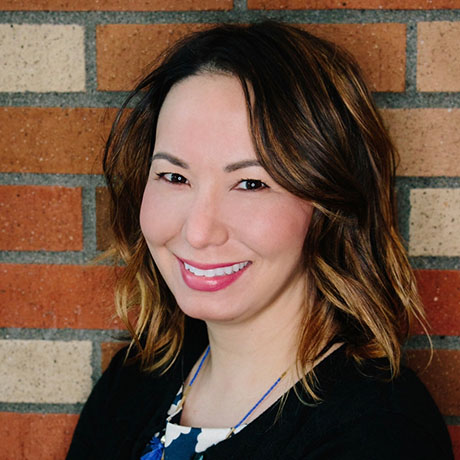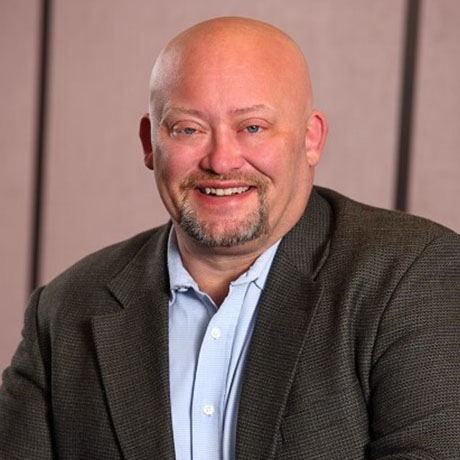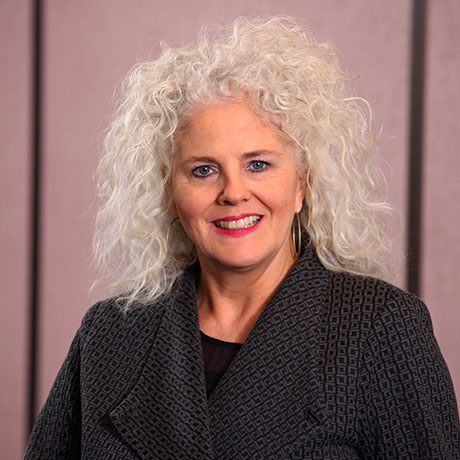Settling Credits Before Listing Your Practice


You’ve made the decision to sell your practice, and with that comes the to-do list of tasks that can often feel daunting. One important task that is often overlooked is settling patient credit balances.
What are credit balances and where do they come from?
In many cases, a patient will have a credit on their account when their insurance pays more toward their treatment than anticipated or you estimated a patient portion to be higher than was necessary and collected accordingly. In these instances, patients paid more out of pocket than necessary; therefore, the difference will show as a credit on their account and on your accounts receivable report or unassigned credit report. Credit balances can also result from patients mailing in a payment or making an online payment on a balance that they have already paid. These are duplicate payments typically made in error. When this happens, we recommend contacting the patients and advising them of the duplicate payment before posting it to their accounts. Many patients will request that you return their duplicate payment to them and some will elect to leave the credit on their account if they have upcoming treatment planned. If they have upcoming treatment planned, this can be an effective way to get them on the schedule. It can be difficult to reverse an online payment and, in those instances, you may have to post it to the patient’s account. In other cases, patients may pay upfront for larger treatment plans and due to unanticipated circumstances, they were not able to complete their full treatment, or perhaps less treatment became necessary. If you have a practice where patients with insurance are required to pay their patient portion due at the time of scheduling their appointment for treatment, then credit balances will appear on the patient account until the procedures are posted and until insurance has paid their portion, this is just the normal course of collecting patient portions upfront. The same applies to patients without insurance if you collect the patient portion upfront.
How should I be handling credit balances?
To keep your credit balances at a minimum I would suggest you come up with an efficient protocol with whoever is in charge of your accounts receivable, whether it be your office manager, bookkeeper, or yourself. Credit balances are typically handled by an office manager. It is our recommendation that your accounts receivable report or unassigned credit report be reviewed monthly. If there are outstanding claims on an account, no refund is due yet. If there is a credit balance and there are no outstanding claims, we recommend contacting each patient and advising them of the credit balance. And again, if they have been treatment planned for procedures ask each patient if they would like to keep the credit balance on their account and get them on the schedule for treatment. If they have no upcoming treatment, it is typically best practice to refund the patient as soon as possible to keep your accounts clean. Make sure to document these conversations about credit balances in patient notes. This will serve you well in the long run when reviewing your reports each month for credit balances. Some practices choose to monitor patient credit balances quarterly; however, if you are preparing to sell your practice, we recommend that you do this monthly. You’d be surprised how quickly credit balances add up and how often they are overlooked.
One important note of caution! When reviewing the credit balances on patient accounts, do not assume that the refund always goes to the patient! You want to look back to the last zero balance on each account and look at patient payments made and insurance payments made. Insurance companies make mistakes and sometimes they overpay and sometimes they make a duplicate payment on a claim. In these instances, the refund is due to the insurance company and not to the patient. Some insurance companies catch these errors quickly and request a refund in writing. Others do not catch them so quickly and they have up to a year to claim their refund (this may vary from state to state). Pay attention to this detail when reviewing accounts. Remember to make notes in patient account notes so you don’t have to repeat your efforts every month.
I have not been settling patient credits on a regular basis, I have thousands of dollars in credits now what?
Follow the detailed recommendations above and get your accounts with credit balances cleaned up. It is essential to do this leg work prior to the sale of your practice. Make every effort to contact your patients to refund any monies due to them. If the refunds are due to insurance company overpayments, contact them and ask that they send a request for refund letter. If you are unable to reach patients with credit balances due to them, these credit balances in many states must be reported to the state in which your practice is located. For example, in the state of Washington, credit balances over a certain dollar amount must be documented on an “Unclaimed Property Report” and filed with the state before November 1st each year. Do some research and find out what your state’s unclaimed property reporting requirements are.
*Disclaimer: The information above is not legal advice. Each state has its own rules and regulations. Be sure to review all rules and regulations as circumstances may vary.
Read MoreEntrepreneurial Energy


What defines entrepreneurial energy? According to David Lyons, PhD:
“Entrepreneurial energy is the force that sustains the momentum and velocity of progression in the venture. Energy can rise through excitation/agitation and fall through decay of the energy as a result of predicaments or failures.
Entrepreneurial energy is an endogenous force that fuels motivation and sustains entrepreneurial action and momentum. Encapsulating hope, optimism and obsessiveness, the nature and experience of the entrepreneurial energy provides meaning to the entrepreneurial pursuit and venture. Entrepreneurial energy is a motivational construct characterized by positive intense feeling, emotional arousal and internal drive and engagement in the pursuit that is salient to the self-identify of the entrepreneur. The positive affective state also generates positivity in the cognitive state fostering creativity and recognition of new patterns of information critical to opportunity recognition and exploitation in the external environment.
Entrepreneurship, after all, is a science of turbulence and change, not continuity. Turbulence is caused by certain force. Such is the force in entrepreneurship, like the wind is felt but not seen; or seen through the ruffle of the leaves but not the wind itself.”
Most of you reading this article can relate to those attributes, especially early in your career. Remember talking to your friends in dental school and making plans for your practice? Remember the excitement of updating your new practice? Remember the hours put in behind the scenes to get the practice where you wanted it?
Do you still have that energy in you? If you do, this is a great time to be a dentist entrepreneur. Consolidation is happening and it will favor the big and the bold.
What if you don’t? That is okay also, but the time to consider harvesting your practice asset is now.
In my exit-planning training, coaching our clients to either grow or sell their businesses was absolutely paramount. Stasis really is an illusion. Equipment gets older. Technology becomes dated. Marketing plans become obsolete. Business values decline.
So ask yourself, grow or sell?
Read MoreWhat To Do with Your Practice If You Are Sick Or Dying?
Most of us have a vague notion of what retirement might look like but that’s where our planning usually stops. Getting sick or receiving a terminal diagnosis isn’t something that is easy to think about and is even more difficult to talk about. Nobody wants to contemplate their last moments in this world.
Sadly, we have all witnessed peers who have been thrown a curve ball and had an illness or untimely death. The aftermath of these events places a huge strain on our families. However, these stresses can be lessened with some discussion and at the very least, taking the steps now to get the right people in place when you need them.
An unexpected sickness can occur at the height of our professional careers. Depending on the prognosis, it’s critical to get our affairs in order as quickly as possible. Staff might suspect that something is amiss, and you can ask them to keep health issues confidential.
If you haven’t assembled a team already, start searching for a reputable estate-planning attorney and CPA. Also include the often-overlooked professional; a practice transition broker who can assist with the transition of your practice and can begin the process with you as soon as possible. Most widows/widowers are not thinking that the responsibility of selling the practice will fall on their shoulders. Start these delicate conversations with your spouse now, so they won’t be left to deal with this in addition to emotional stress.
If you are still able to work at your practice, we can begin to market the practice heavily but discretely so we can find a buyer as quickly as possible. The best medicine for you is to heal and take care of your family. Selling might seem short-sighted if you expect to make a full recovery, but there are many other options available if you still want to continue to work after you heal.
However, for those doctors who pass unexpectantly, word of mouth tends to get ahead of any marketing and the reality is that your practice will be marketed without a doctor and thus the practice value can decrease substantially. Some of the most difficult challenges that we have encountered are in serving spouses who are left to deal with quickly selling a practice when the doctor is sick or has passed away. The value of the practice drops sharply and is often valued at 30-40% less even after just one month without a doctor.
Prepare for the unexpected. Assemble your professional team and get your estate planning documents in order. Most importantly, make this information accessible and communicate your wishes with your spouse.
Life is short, spend your days doing what you enjoy and take care of your health.
Contact us today for a free consultation.
Read MoreInterview Questions for Every Dental Practice Role


Businesses across the country are struggling with staffing issues and the dental world is NO exception. During the pre-pandemic years finding great staff was a challenge, but since the pandemic began finding and retaining great staff has become a tumultuous experience. What follows are some interview questions that have helped dentists and their practice managers sift through their potential candidates – when you can get candidates. And the increased competition for workers has made this an employee-driven vs. employer-driven market. You’ve got to know your budget and get clear on what additional perks or benefits you may be able to offer in this now highly-competitive hiring process.
General Questions for Every Role – Dentists, Hygienists, Office Managers, Dental Assistants, Front Office, and Sterile Techs
1. What are you looking for in a team and an office?
2. What does self-motivation mean to you?
3. What in particular motivates you?
4. How do you organize your day?
5. In a perfect world, how many hours per day and per week would you like to work?
6. How do you deal with conflict in the workplace? Describe a specific situation and how you dealt with it. Would you do anything differently now that you have had time to reflect?
7. How would the previous dentist who employed you describe you if I were to call him/her? What about the other team members, what would they say? Would they say you were on time every day? Easy to get along with? Fun? Great with the patients?
8. What do you think are your greatest strengths? And what are your greatest challenges?
9. Describe a situation when a patient was upset and describe what you did to rectify the situation or help.
10. What are three things you liked most about your last two positions/offices? What are three things you would have changed and why?
11. Describe a great day at the office.
12. What work situations, tasks, or duties cause you stress?
13. Where would you like to see yourself in two years. Where would you like to see yourself in five years?
14. If you weren’t in the dentistry field, what would you be doing? What are you most passionate about?
15. What qualities in a person do you think are important for this position?
16. How would you set the pay scale for this position? What qualifying events or skills would warrant a different pay scale or increase in compensation?
17. What do you think a bonus should be based on?
18. What benefits are most meaningful to you?
19. What have you learned during the pandemic? How did it affect your short and long-term goals?
20. Did you work remotely? Was that easy or difficult for you? How do you feel about being back in an office, working with a team, and having interaction with patients all day?
Additional Questions for Specific Roles:
Hygiene
1. Describe your normal routine with new patients.
2. What protocol do you follow with perio?
3. What are your thoughts about Arestin, rinses, etcetera.?
4. How do you talk with patients about perio disease? What if they have been undertreated and you are now proposing perio treatment?
5. What is your favorite part of being a hygienist?
6. What have you done in the past to build and grow the hygiene department in an office?
7. How do you discuss unfinished treatment and recall? Provide an example.
8. What do you do if you have a broken appointment? In other offices have you been expected to work your own recall and try to fill your schedule?
9. Are you comfortable working when the dentist is out of the office? (If it’s legal in your area?).
Dental Assistant
1. Have you been involved with placing dental supply orders? Explain your process.
2. What have you normally done during downtime?
3. How do you talk with patients about unfinished treatment and recall? Provide an example.
4. What are your most/least favorite procedures?
5. Describe the perfect dentist to assist and why?
Office/Practice Manager
1. How would you describe your management style?
2. What are your thoughts about micro-managing?
3. What steps do you take when you realize that you have made a hiring mistake?
4. Do you enjoy being at the front desk or in an office behind the scenes?
5. What do you bring to a team to keep them motivated and smiling?
6. In your previous office did you have full responsibility for the accounts receivable? What was your average production to collection ratio?
7. In your previous offices, how would staff describe you?
Front Office
1. How do you welcome new patients to the practice?
2. What have your past responsibilities been? Which did you enjoy most?
3. How do you talk with patients about treatment costs? Provide an exact example of presenting treatment and negotiating a financial arrangement.
4. How do you discuss unfinished treatment and recall?
5. How do you describe a perfect schedule and how do you create it?
6. How do you fill any last-minute appointments?
7. Do you enjoy recall and scheduling?
8. How much experience have you had setting up insurance, submitting claims, and following up with insurance companies for payment?
Dentist
1. What does a perfect schedule look like to you?
2. What is your perio protocol?
3. How do you encourage patients to finish incomplete treatment?
4. How do you ask for referrals from existing patients?
5. What do you do at a new patient appointment?
6. What types of procedures do you most enjoy?
7. Are you comfortable being the only dentist working in the office?
8. What is your typical production per day?
9. How would your current/past dental assistant describe you? How would an owner doctor or office manager describe you?
10. What are your goals for each patient and each day?
11. Is this office located outside any current non-compete you may have?
12. Will you be able to legally bring any patients with you?
Buying Another Location


It’s very exciting to think about adding a location! Here are some issues to think about before making this big decision.
Why? If it’s to increase collections, maybe you can simply add more days or extended hours at your current location. Verify what your current patient retention is to determine if you need to mine from existing patients. Is there any area nearby that is underserved?
Where? Check your current zip code demographics and determine where most of your patients come from and if it makes sense to market that specific area. Do your due diligence regarding the number of dentists in the areas around you to make a good decision on where you may be more successful.
Will you have current patients going to a new location? You don’t want to add a location only to find that a large number of patients switch to the new location. Some cannibalism is fine, but remember the point is to increase patients/collections, not move them from one location to another.
How will you handle patients going to both offices? Contact your dental software company and have them set up the same system in the new location and set up provider numbers for each location so everyone can see past and diagnosed treatment, as well as health history, AR, etc.
How will you know if both locations are profitable? Work with your CPA to have books that show you numbers for each location as well as together, so that means you will need to post collections, payroll, dental supplies, lab, utilities, etc. per location. Monitor provider production in each location. Are some dentists and hygienists more productive in one location, and if so, why?
Who will work it? If you have a team that wants more hours, that is ideal since they already know the systems and processes you have set up. Be sure to have team members clock in hours to each location as applicable.
Need another dentist? Interviewing is critical to find the right fit. If the associate will be working alone in one of the locations, you will want to do a lot of training, so they understand their role, responsibility with the team, and simply set your expectations, then continue to monitor. Work with your dental attorney to create a job description, employment agreement, compensation, non-compete, etc.
How do I manage multiple locations? Consider hiring a manager that can oversee training, team schedules, and general practice management.
Work with your transition consultant (broker) to assist you! Contact us today.
Read More